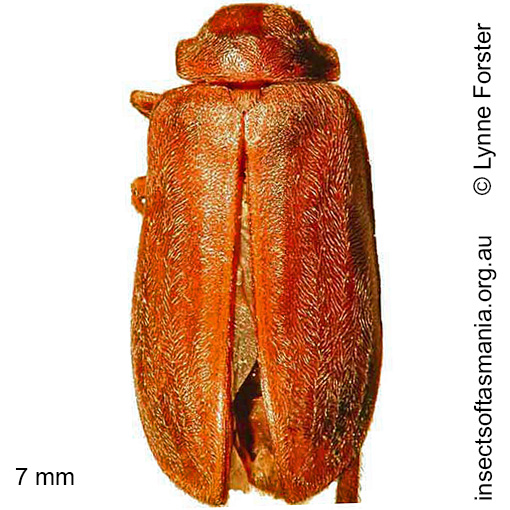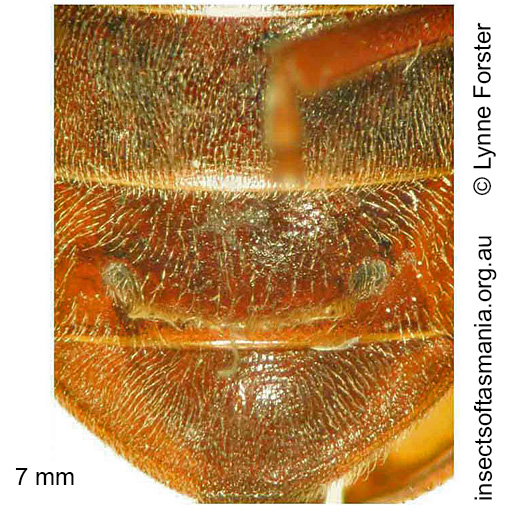
Daploeuros tasmanicus (a species of marsh-beetle)
Basis for Tasmanian occurrence
Watts, C.H.S. (2011). Revision of Australian Scirtidae of the Genera Chameloscyphon GEN. NOV., Daploeuros GEN. NOV., Dasyscyphon GEN. NOV., Eurycyphon GEN. NOV., Macrodascillus Carter, Petrocyphon Gen. NOV. and Spaniosdascillus Gen. NOV. (Coleoptera). Transactions of the Royal Society of South Australia 135 (1): 66-110. (as Daploeuros tasmanicus)
TMAG collections
Classification
Order: Coleoptera
Suborder: Polyphaga
Superfamily: Scirtoidea
Family: Scirtidae
Morphology
Typical length (mm): 7
Flightedness: winged and assumed capable of flight
Source literature on morphology and taxonomy (*primary taxonomic source, where identified):
*Watts, C.H.S. (2011). Revision of Australian Scirtidae of the Genera Chameloscyphon GEN. NOV., Daploeuros GEN. NOV., Dasyscyphon GEN. NOV., Eurycyphon GEN. NOV., Macrodascillus Carter, Petrocyphon Gen. NOV. and Spaniosdascillus Gen. NOV. (Coleoptera). Transactions of the Royal Society of South Australia 135 (1): 66-110.
Ecology
Assumed larval feeding: detritivore
Association with dead wood or old trees: (not yet documented)
Ecological attributes: — May occupy logs or trunks of Eucalyptus obliqua, at least temporarily, since found having emerged within a year of felling (Grove & Bashford, 2003) — May occupy logs or trunks of Eucalyptus obliqua, at least temporarily, since found having emerged within six years of felling (Grove et al., 2009).
Collection method(s) for TMAG material: — Emergence trapping from log of Eucalyptus obliqua — Hand collection from flowers of Eucryphia milliganii (Ettershanks & Ettershanks, 1993) — Malaise trapping — Pitfall trapping.
Source ecological literature:
Grove, S.J. & Bashford, R. (2003). Beetle assemblages from the Warra log decay project: insights from the first year of sampling. Tasforests 14: 117-129.
Grove, S. et al. (2009). A long-term experimental study of saproxylic beetle … succession in Tasmanian Eucalyptus … logs… In: Fattorini, S. (Ed.), Insect Ecology and Conservation. Research Signpost, pp. 71-114.



